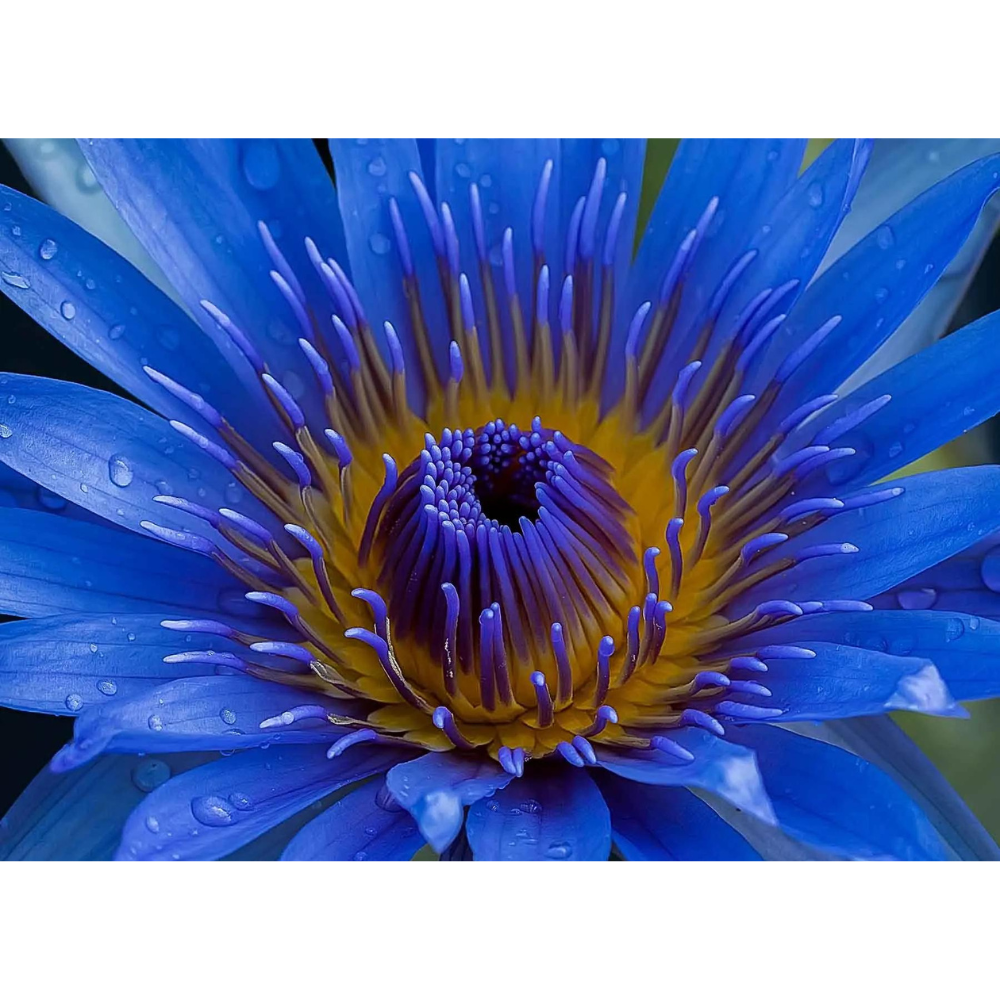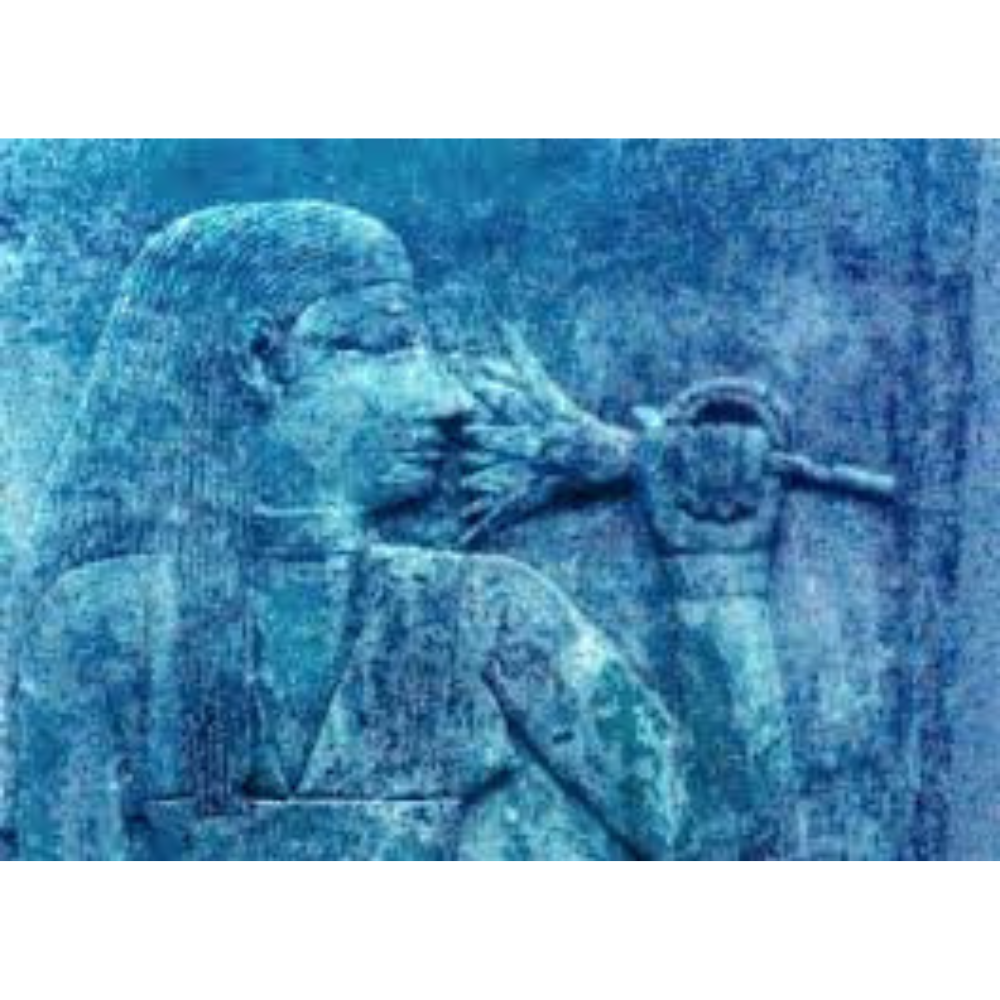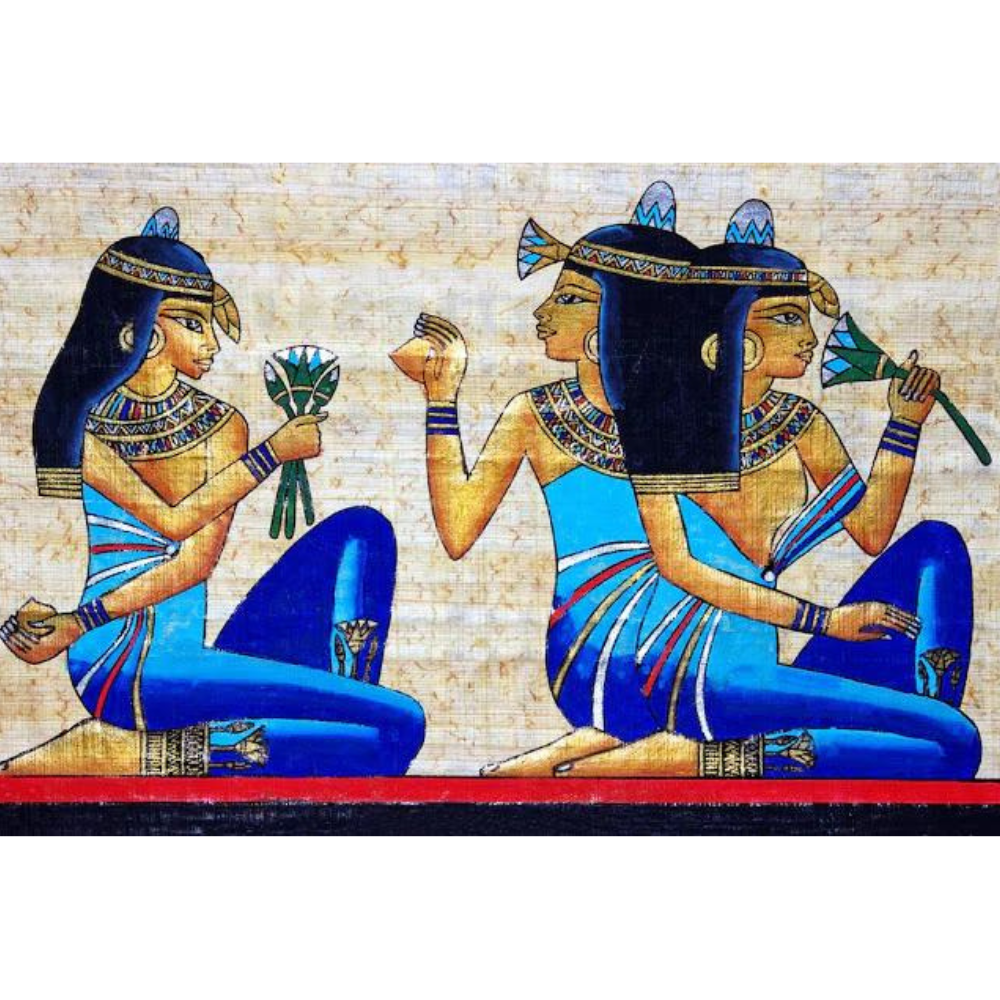Blue Lotus Flower
Among the vast array of botanical wonders, the Blue Lotus Flower (Nymphaea Caerulea), also known as the Blue Egyptian Lotus or Sacred Water Lily, stands as an enigmatic and mesmerising plant with a rich historical legacy. Revered in ancient Egypt for its psychoactive properties and spiritual significance, the Blue Lotus Flower continues to capture modern-day interest for its potential therapeutic benefits. In this blog post, we delve into the captivating world of the Blue Lotus Flower, exploring its ancient roots, contemporary uses, and the remarkable benefits that have made it an alluring botanical treasure.
What is Blue Lotus Flower?
Ancient Roots and Spiritual Significance of Blue Lotus:
We dive deep into figuring out how Blue Lotus Flower had been used by Ancient Egyptians thousands of years ago.
Modern Day Uses And Benefits of Blue Lotus...
We will be explaining how Blue Lotus Flower is used in the present day to help millions of people..
Is Blue Lotus Addictive?
Blue lotus is not known to cause physical addiction, meaning that it does not create the physical dependence and withdrawal symptoms commonly associated with highly addictive substances like opioids or stimulants.



Ancient Roots and Spiritual Significance of Blue Lotus Flower:
Throughout ancient Egypt, the Blue Lotus Flower played a pivotal role in cultural and religious practices. Often depicted in ancient art and mythology, it symbolised rebirth, enlightenment, and spiritual transformation. Egyptian priests and pharaohs would often consume the plant in various forms, such as infusions or rituals, to induce profound visions and heightened states of consciousness.
Frequently Asked Question
In ancient Egypt, the Blue Lotus Flower held a central place in religious and cultural practices. It was associated with the sun god Ra and the goddess of fertility, Hathor, symbolizing creation, rebirth, and the mysteries of the afterlife. Depictions of the Blue Lotus adorned temples, hieroglyphics, and sacred objects, highlighting its importance in daily life and religious ceremonies.
The Blue Lotus Flower was revered for its potential to induce altered states of consciousness, leading to spiritual insights and visions. Ancient Egyptians and other civilizations used the flower in rituals, meditation, and other practices to facilitate communication with the divine, achieve spiritual clarity, and connect with higher realms of existence.
In the pursuit of enlightenment and spiritual growth, the Blue Lotus Flower became a valuable aid for meditators and seekers of wisdom. It was believed to deepen meditation experiences, allowing practitioners to delve into the depths of their minds and gain profound insights into the nature of reality.
The Blue Lotus Flower’s daily cycle of opening in the morning and closing at night symbolized resurrection and rebirth. This concept aligned with ancient Egyptian beliefs in the cyclical nature of life and the soul’s journey through the afterlife. The flower’s association with renewal and transformation added to its spiritual allure.
The blue hue of the flower was associated with purity, wisdom, and divine origins. It was considered a sacred gift from the gods, and its color represented the vastness of the sky and the expansiveness of the divine realm.
While ancient Egypt holds a prominent place in the Blue Lotus Flower’s history, its influence extended to other cultures as well. In India, it was associated with deities like Vishnu and Goddess Lakshmi, signifying beauty, purity, and enlightenment. The flower’s impact on spirituality and art transcended borders, leaving its mark on various civilizations.
A Psychoactive and Medicinal Plant:
The Blue Lotus Flower (Nymphaea caerulea) is a captivating botanical treasure known for its dual nature as both a psychoactive and medicinal plant. Throughout history, this enchanting flower has been revered for its unique properties, influencing ancient civilizations and traditional healing practices. Here’s an exploration of the Blue Lotus Flower as a psychoactive and medicinal plant:
The Blue Lotus Flower contains a variety of alkaloids, including nuciferine and aporphine, which contribute to its mild psychoactive effects. When consumed, the flower is known to induce a sense of relaxation, euphoria, and heightened sensory perception. It has been traditionally used in spiritual practices, meditation, and rituals to facilitate altered states of consciousness and foster a deeper connection with the divine.
Beyond its psychoactive properties, the Blue Lotus Flower has a long-standing reputation as a medicinal plant. It has been used in traditional healing systems for various purposes, including:
a. Sleep Aid: The flower’s calming and sedative effects make it an appealing natural remedy for insomnia and sleep disturbances. It may help promote relaxation and facilitate restful sleep.
b. Anxiety Relief: The Blue Lotus Flower’s potential to reduce anxiety and stress has led to its use as an herbal remedy for soothing the nervous system and alleviating tension.
c. Mood Enhancement: Its mild euphoric effects have made it a popular choice for enhancing mood and promoting feelings of well-being.
d. Pain Relief: Some traditional healing systems use the Blue Lotus Flower to alleviate minor pain and discomfort.
The Blue Lotus Flower can be prepared and consumed in various forms to harness its psychoactive and medicinal properties. Common methods of consumption include:
a. Herbal Tea: Infusing dried Blue Lotus Flower petals or whole flowers in hot water creates a relaxing and aromatic herbal tea.
b. Tincture: An alcohol-based tincture can be prepared by steeping the flower in high-proof alcohol, extracting its active compounds.
c. Vaporization: The flower can be vaporized using a dry herb vaporizer to inhale its psychoactive constituents.
d. Smoking: Traditionally, the dried Blue Lotus Flower has been used in smoking blends, though this method is less common today.
As with any psychoactive or medicinal plant, responsible use of the Blue Lotus Flower is essential. Dosage, preparation, and individual sensitivity should be considered to ensure a safe and enjoyable experience. Pregnant or breastfeeding individuals, as well as those with specific medical conditions or taking medications, should consult with a healthcare professional before use.
Is Blue Lotus Legal and Safe to Use?
Millions of people globally use Blue Lotus Flower globally… Here we dive into how legal is Blue Lotus Flower, and where is it illegal…
As September 2021, the legality and safety of using Blue Lotus Flower (Nymphaea caerulea) can vary depending on the country or region. It is essential to research and understand the specific regulations and laws regarding its possession, sale, and use in your location before considering its use.
Legality:
In most countries, the Blue Lotus Flower is legal and freely available for purchase and consumption. However, in other places, it may be regulated as a controlled substance due to its psychoactive properties. Therefore, it is crucial to be aware of the legal status in your region to avoid any potential legal consequences.
Safety:
When used responsibly and in moderation, the Blue Lotus Flower is generally considered safe for most individuals. Traditionally, the flower has been consumed as a tea or in various herbal preparations for its potential calming and mood-enhancing effects. However, individual responses to the flower’s psychoactive properties may vary, and some people might be more sensitive to its effects.
Caution is advised for the following groups:
- Pregnancy and Breastfeeding: Pregnant or breastfeeding individuals should avoid using the Blue Lotus Flower due to the lack of sufficient safety data in these populations.
- Medical Conditions and Medications: If you have any pre-existing medical conditions or are taking medications, it is crucial to consult with a healthcare professional before using the Blue Lotus Flower. The flower may interact with certain medications, leading to unintended side effects.
- Sensitivities: As with any psychoactive substance, some individuals may experience adverse reactions or allergic responses to the Blue Lotus Flower. It is recommended to start with a small dose and assess individual tolerance.
- Driving or Operating Machinery: The Blue Lotus Flower’s calming effects may cause drowsiness in some individuals, making it unsafe to drive or operate heavy machinery under its influence.
Always purchase Blue Lotus Flower from reputable sources to ensure its quality and authenticity. If you have any health concerns or uncertainties, consult a healthcare professional before using the flower as a supplement or for any medicinal purposes.
Please note that legal and safety information can change over time, so it is advisable to check the most recent laws and regulations in your region and consult up-to-date sources for information on the safe and legal use of the Blue Lotus Flower.
